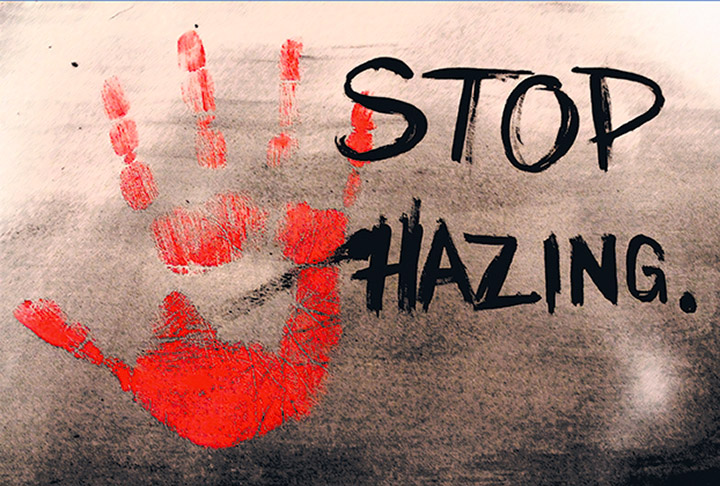We need to see that hazing is an issue
September 30, 2018
Despite large cultural differences, nearly every civilization engages in some form of hazing.
From elaborate manhood rituals to giving the new person a hard time at work, hazing seems to be built into our brains.
But why is it so hard to fight? First, it’s hard to define. Is making a joke at another person’s expense hazing? What about giving the new guy the worst job?
Hazingprevention.org says hazing is when any member of a group or team is intentionally embarrassed, harassed or ridiculed by someone in a position of power.
Hazing traditions are more prevalent on college campuses than in any other group or culture.
According to the National Study of Student Hazing, 55 percent of college students reported being hazed after joining a club, team or organization.
Some students seem to consider hazing a normal part of college life.
Many students who experienced hazing focused on the benefits, claiming that they felt more like part of the group or gained a sense of accomplishment.
Only five percent of students reported hazing to campus officials.
Of the students who did not report hazing, more than half said they were afraid of getting their group in trouble.
So why don’t schools take more action to prevent hazing? Why are no teachers, coaches or alumni noticing when their clubs or teams engage in hazing?
It’s because they don’t see it as a problem either. A fourth of hazed students reported that a member of the school faculty, a coach or an alumni member was present during the hazing.
With hazing so common on campus, surely the activities are generally safe, right? Wrong.
Across all clubs, teams and organizations, mandatory drinking games are the most common form of hazing.
Drinking until you pass out and only associating with certain people are also common forms of hazing.
As a student myself, I am very familiar with the stresses of college life. Students are expected to attend class, complete assignments, look after their health, sleep and possibly go to work or practice.
Hazing victims are expected to meet all these expectations while having this stress compounded.
So, what can we do about it? The first step is changing the perception of hazing. Colleges, clubs and Greek organizations need to educate staff and students on what hazing looks like.
Most schools claim to have a “no tolerance” policy on hazing, but they often fail to clarify what hazing is or who’s responsible for addressing it.
The ULM hazing policy gives a very clear definition of hazing, but it’s a bit vague about who handles hazing reports and investigations.
ULM also uses a software called Maxient which allows students to report incidents online. ULM could strengthen its policy further by clarifying who students should report incidents to and spreading awareness of the Maxient software.
College organizations, clubs and teams should all hold mandatory anti-hazing meetings to educate members.
Because most hazed students are afraid of causing trouble for their group, organizations should create an internal anti-hazing officer position.
Students would be more likely to talk to another member of their group about hazing. The organization could also intervene without damaging their reputation.
Finally, because most students think hazing forges bonds between members, organizations and colleges should sponsor more events.
Weekly relay races, scavenger hunts, quiz bowls, fundraisers and outreach events can all build camaraderie between students.
This doesn’t mean that organizations should abandon all their previous traditions. They simply need to be a little more mindful.
For example, fraternity and sorority pledges are often required to clean up after parties. This is not considered hazing. It only becomes hazing if the pledges are mistreated in some way.
If a fraternity member mocked a pledge while he worked or dumped more garbage on the floor, then they would be hazing.
Hazing can be avoided by just being respectful to others.
Having a mix of pledges and members clean or limiting the length of a cleaning shift can also help prevent hazing.
Despite what many students think, the risks of hazing greatly outweigh the benefits, if any. To stop hazing, students and faculty must realize the danger involved.
We all need to stop rationalizing and see hazing for what it really is: destructive and unfair.








